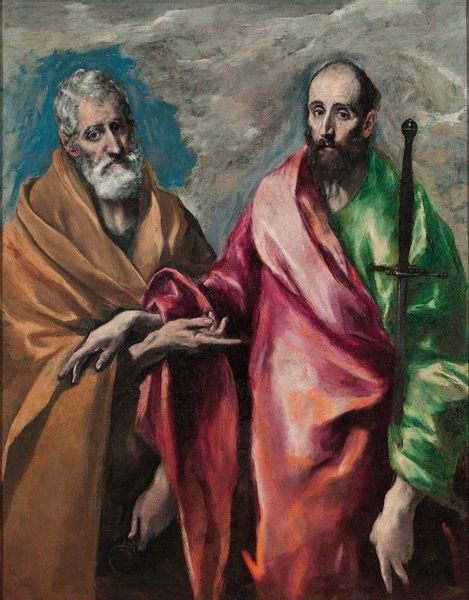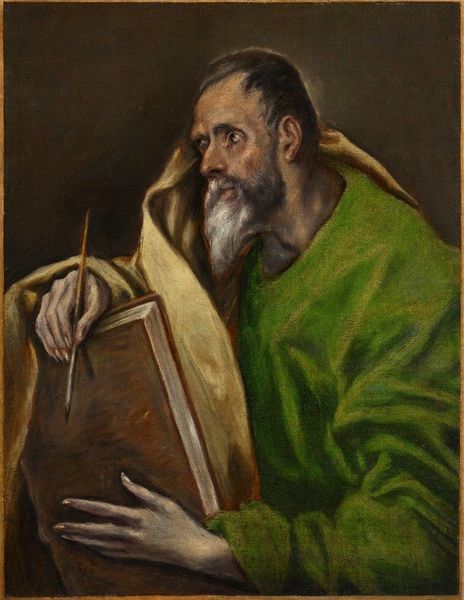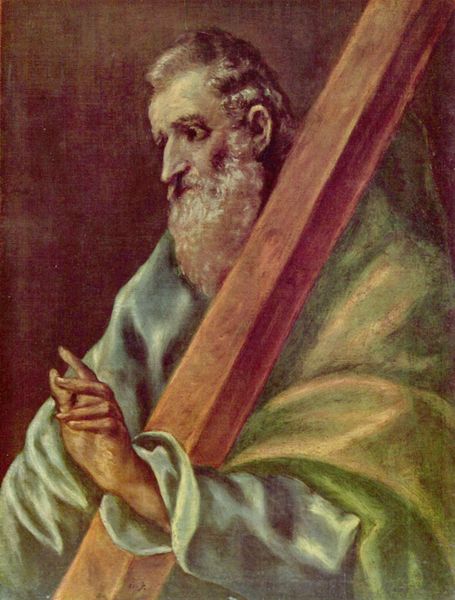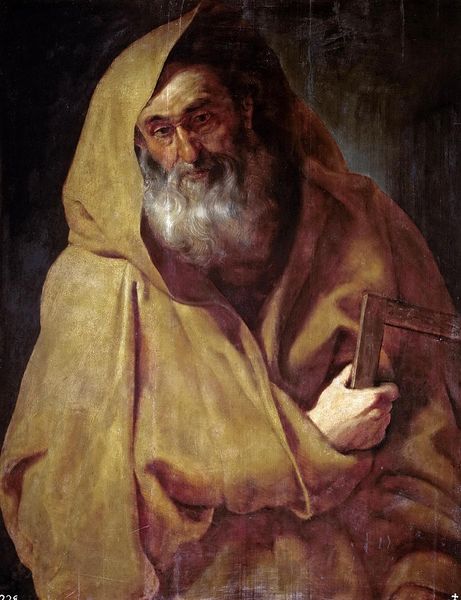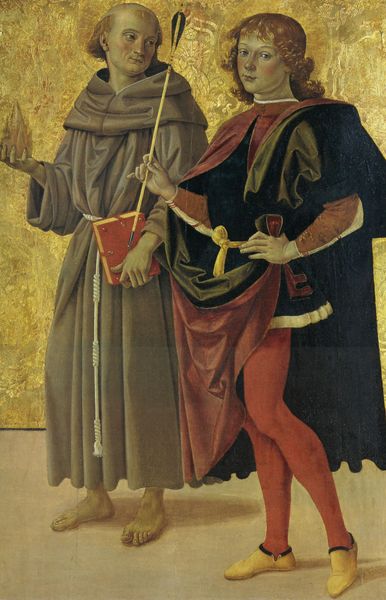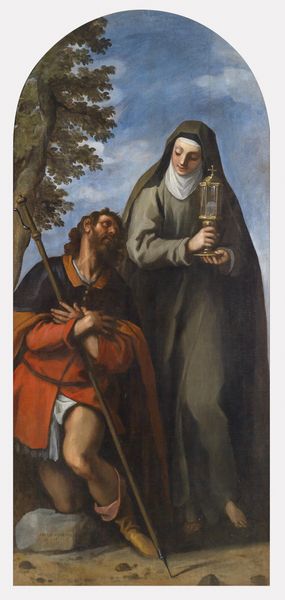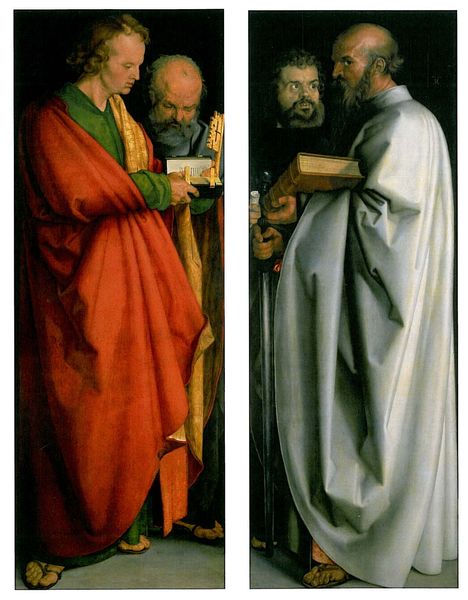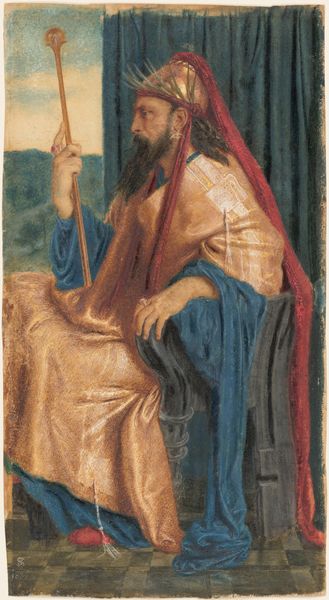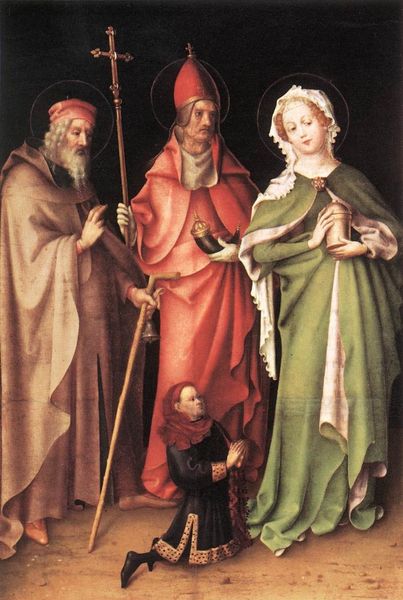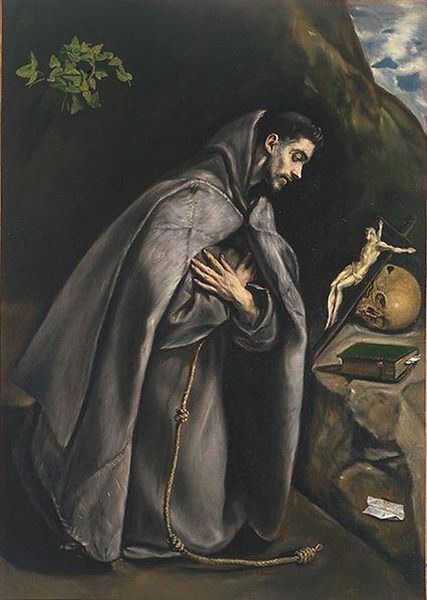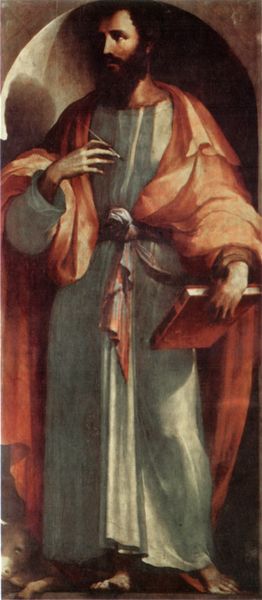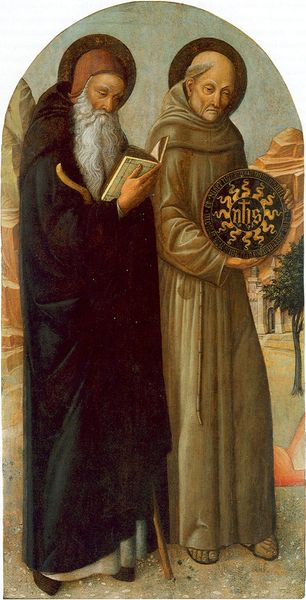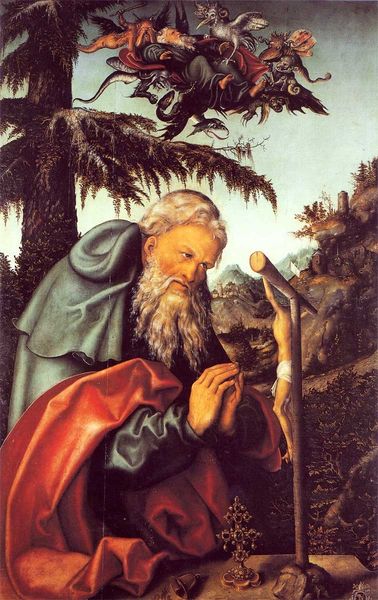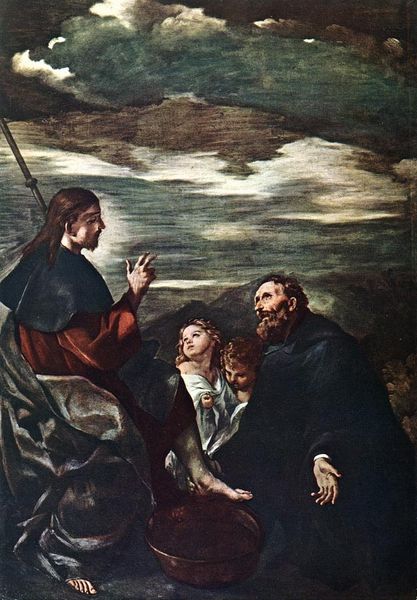
painting, oil-paint
#
portrait
#
painting
#
oil-paint
#
mannerism
#
figuration
#
oil painting
#
christianity
#
history-painting
Dimensions: 167 x 113 cm
Copyright: Public domain
Editor: El Greco's "St. Andrew and St. Francis," painted around 1604 with oils, presents these two figures in such an elongated, almost spectral manner. It’s in the Museo del Prado now. What’s interesting to you about the production of this painting? Curator: Consider how El Greco manipulates oil paint. It's not just about representing religious figures. The thin, almost transparent layering suggests a deliberate choice to emphasize the *making* of the image. Note how the textures of St. Francis’s rough habit contrast with the smoother impasto of St. Andrew’s robe, both made from similar material, highlighting different conditions of wear. Editor: So, you're saying the materiality itself contributes to our understanding? Curator: Precisely. El Greco makes you consider how the materials—the pigment, the linen canvas support—contribute to the final meaning. Look at the cross; it's not a polished object but rough-hewn timber, implying a relationship to labour and industry as the basic structures for religious icons. What does the roughness of this tool, this cross, communicate? Editor: I guess it underscores the earthly reality, the labor, associated with their beliefs. It's not just about divine inspiration; it's about the human act of building faith through very real, material means. Curator: Indeed, it provokes a vital discussion regarding how "spiritual" imagery gets produced materially. Editor: This emphasis on process gives me a totally new lens to look through, especially challenging notions of fine art being separate from manual creation and economic circumstance. Curator: Exactly. Hopefully you will question even your first assumptions about artistic labour as being fundamentally divine!
Comments
No comments
Be the first to comment and join the conversation on the ultimate creative platform.
